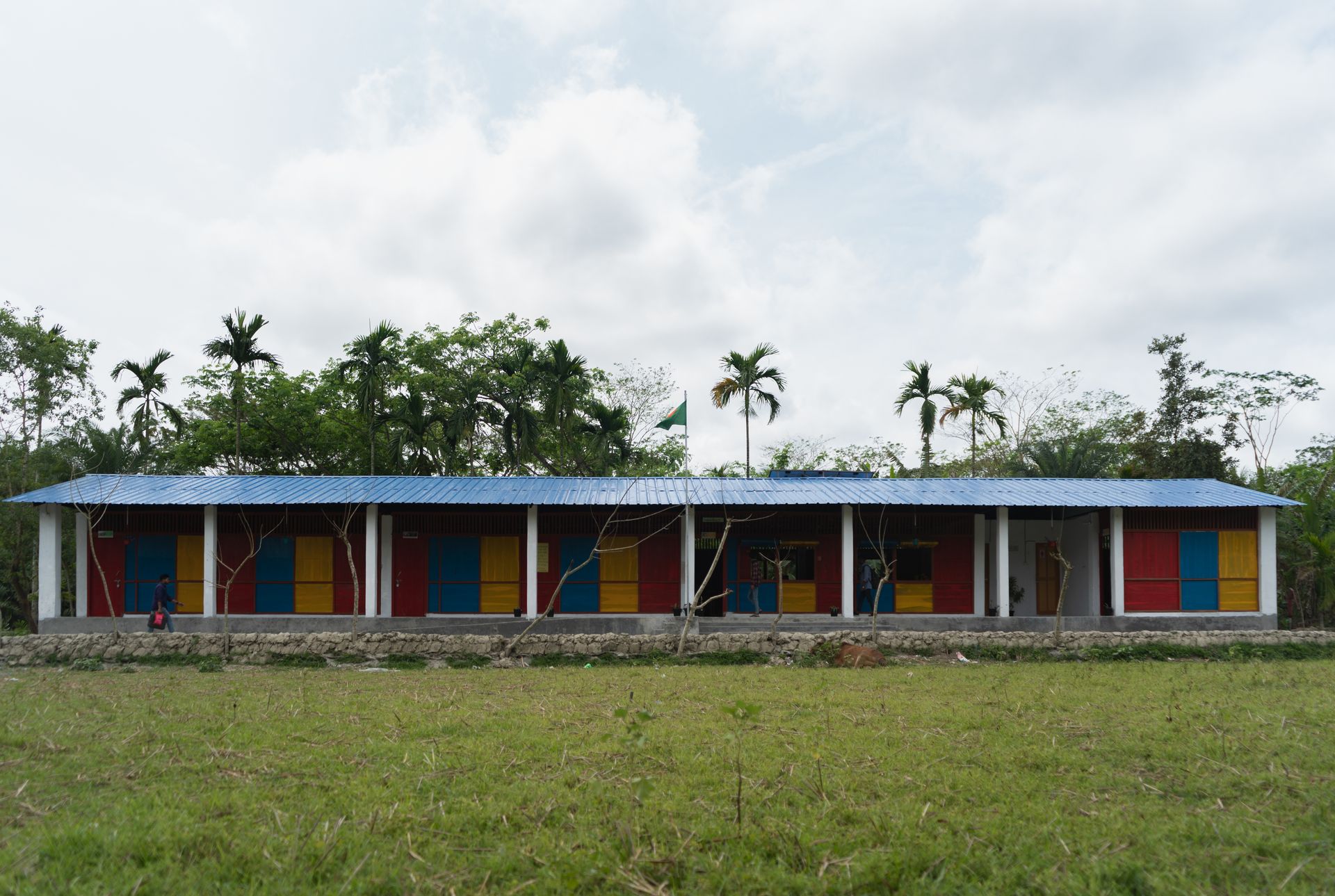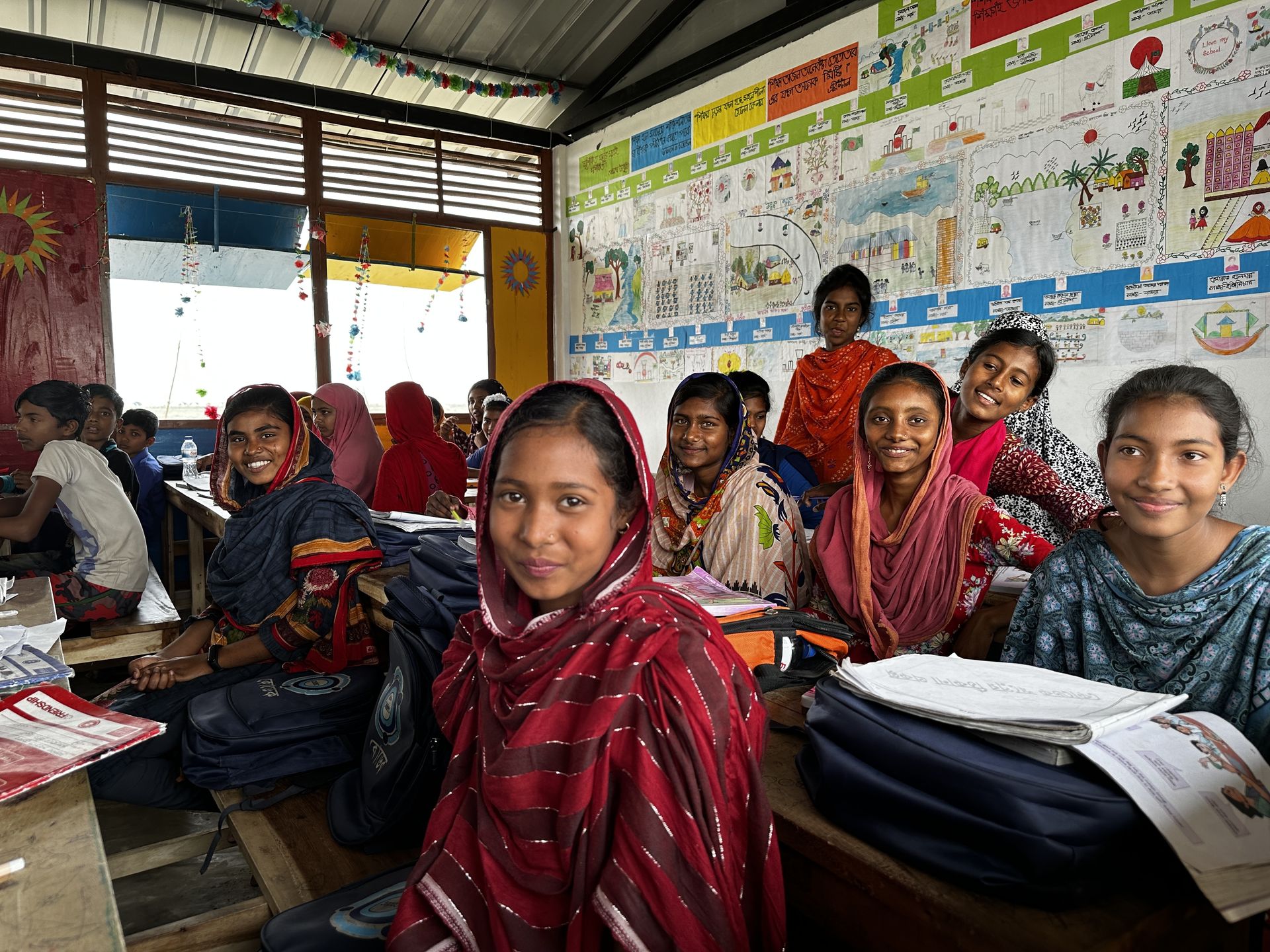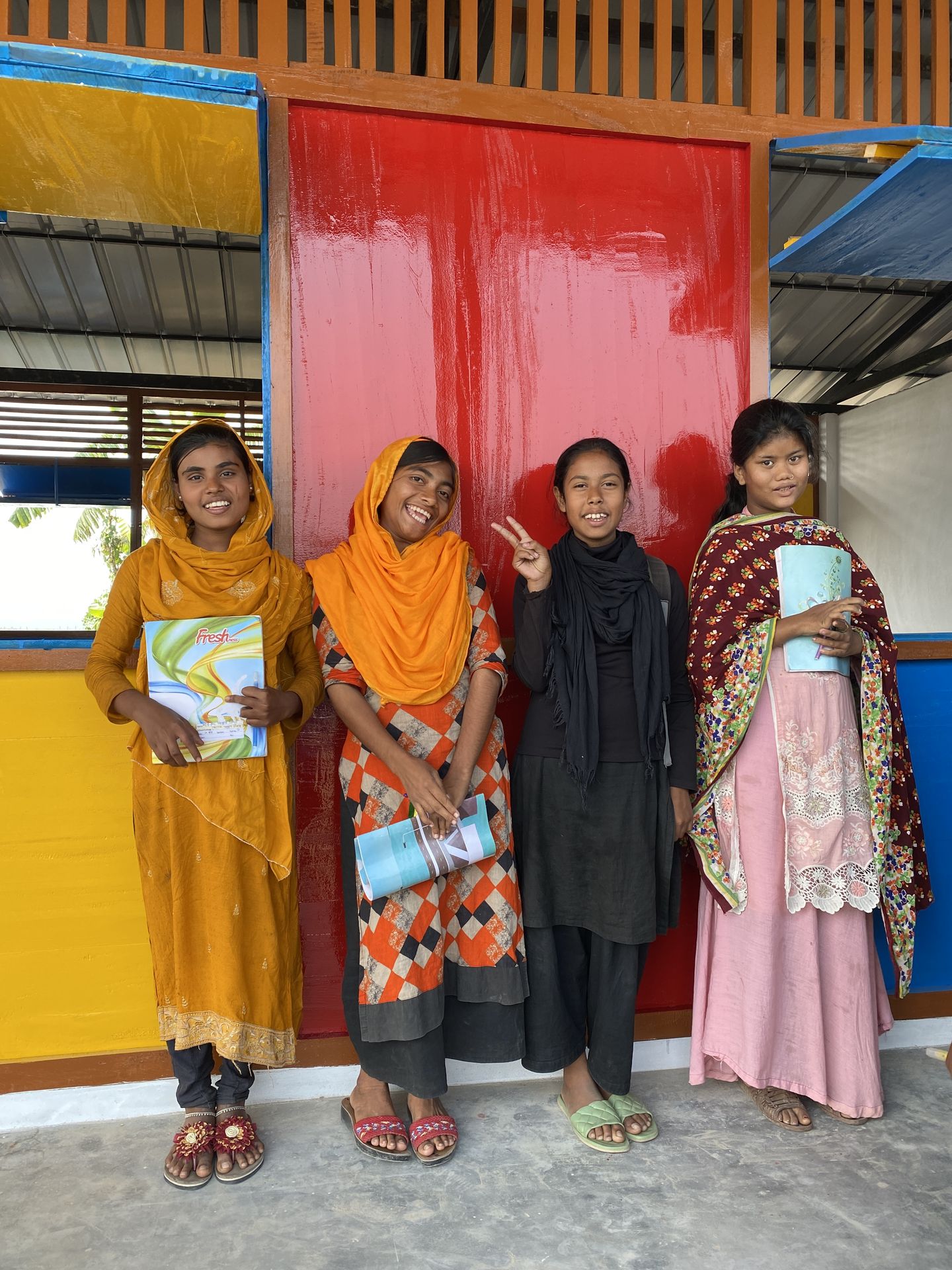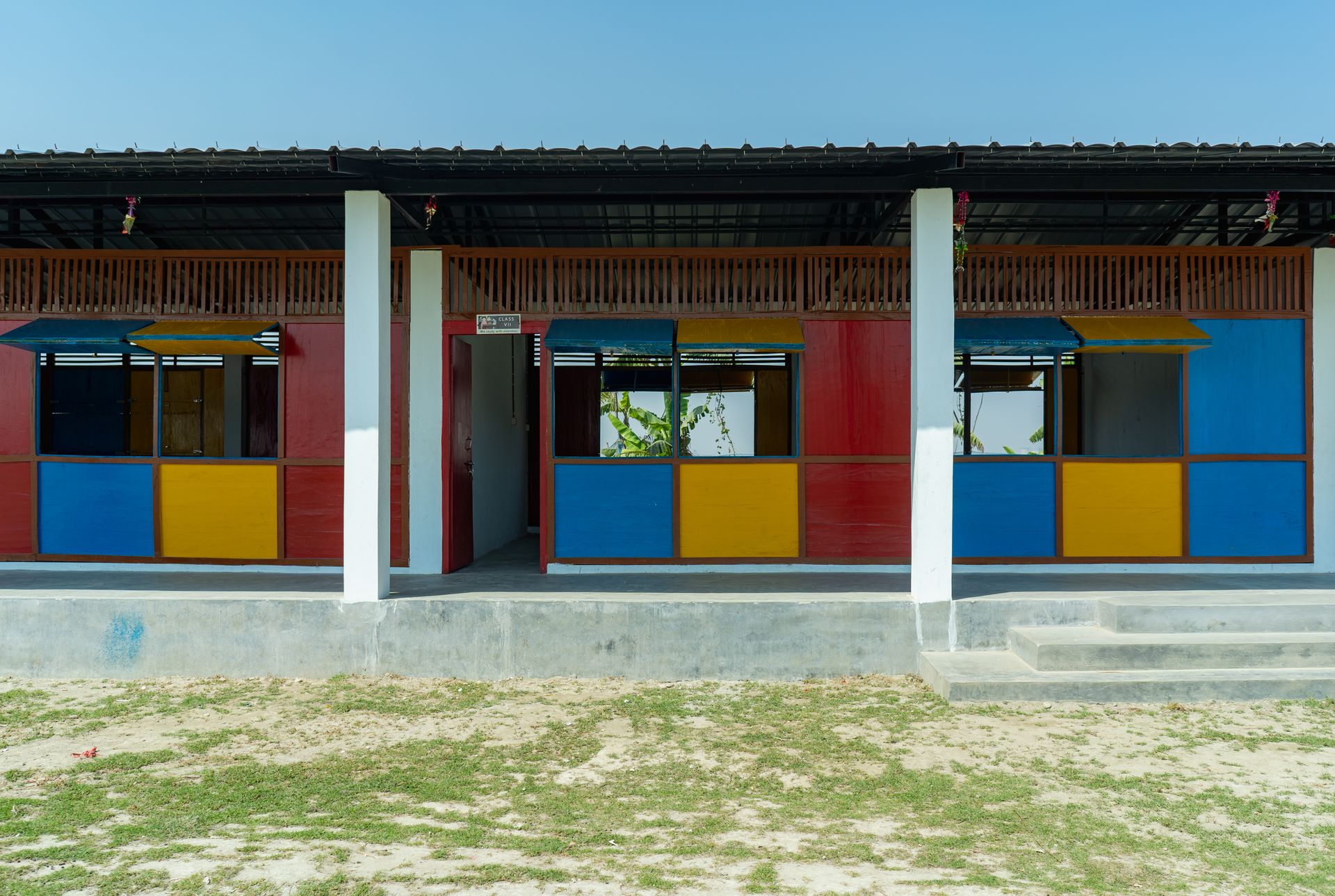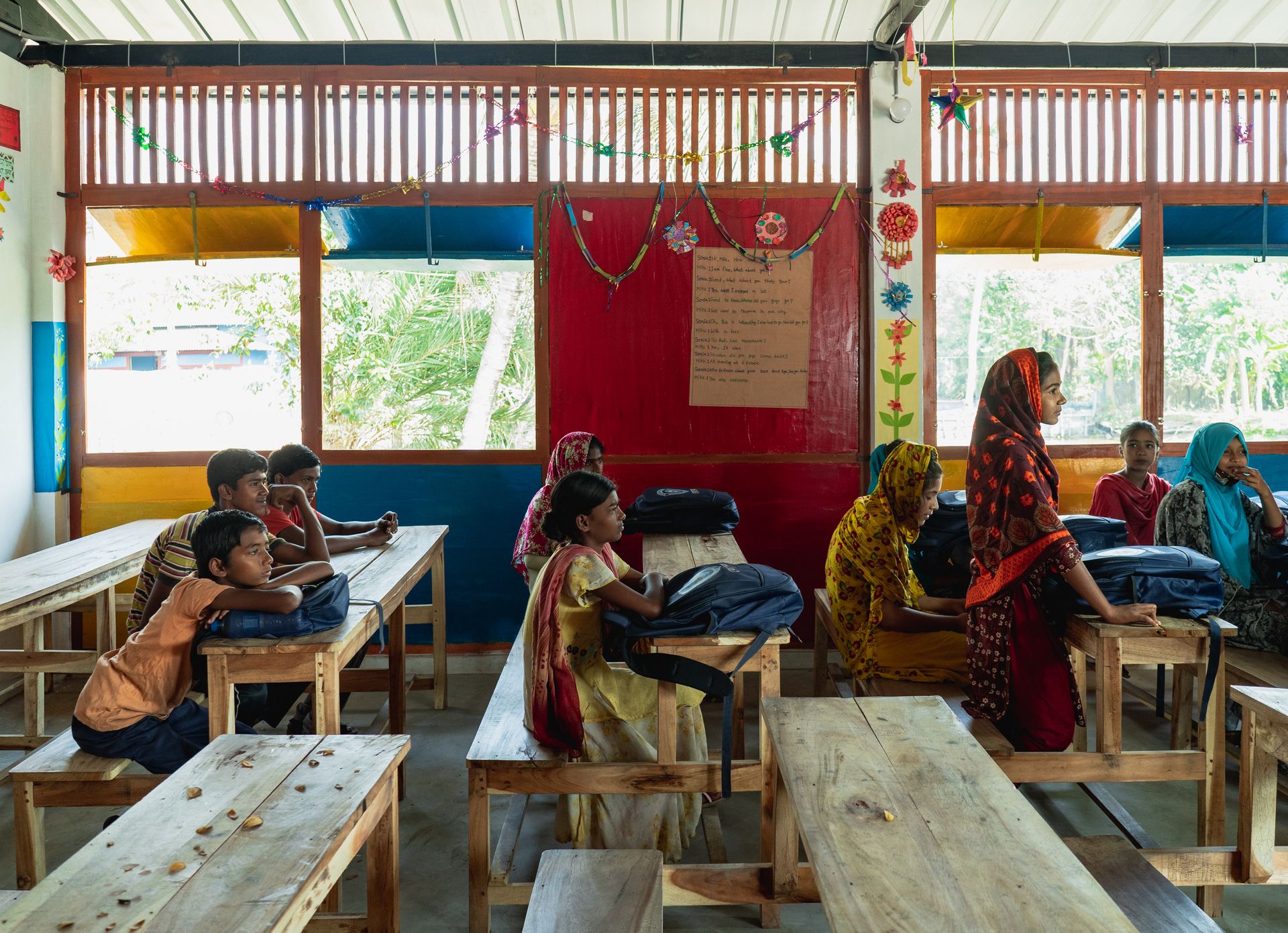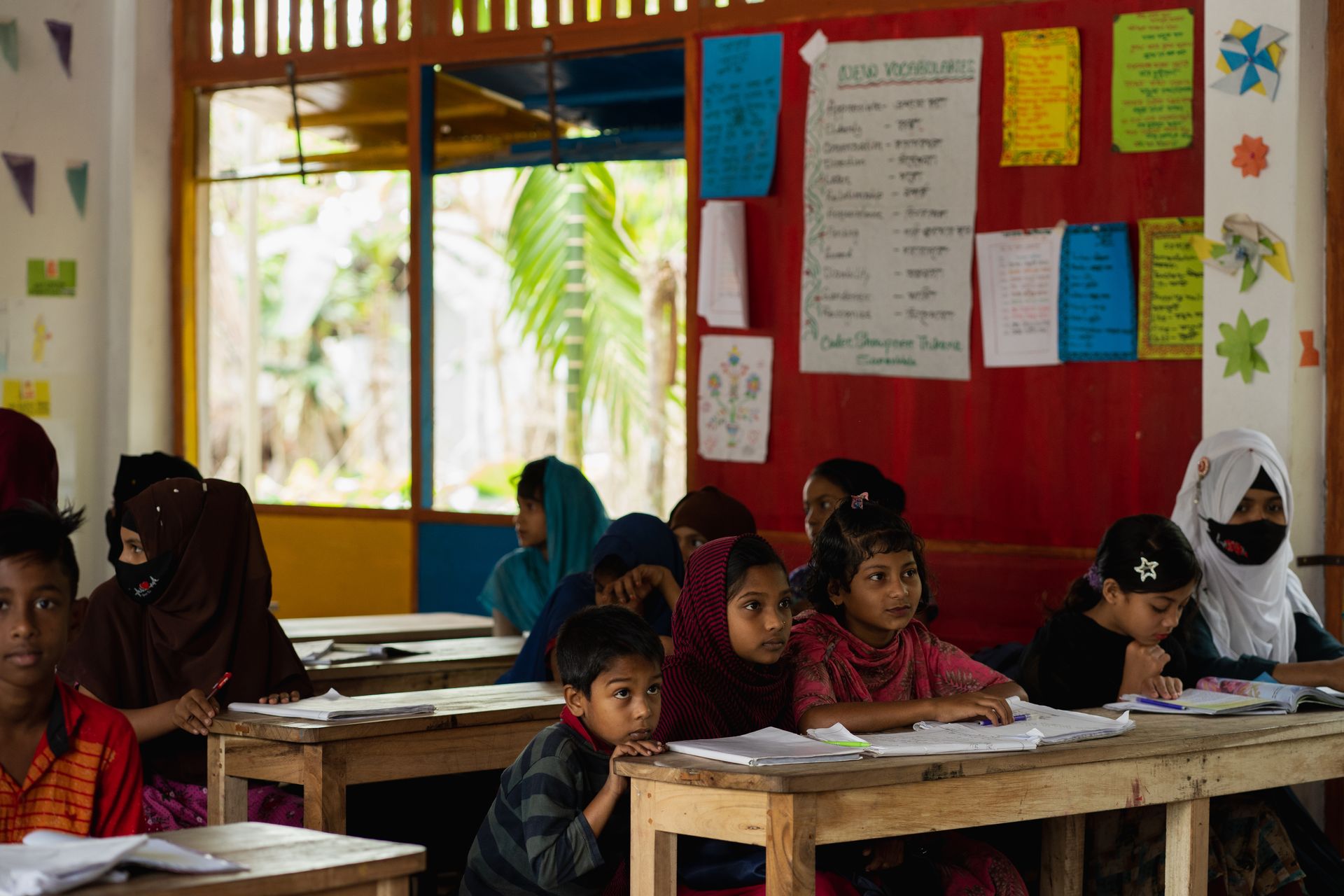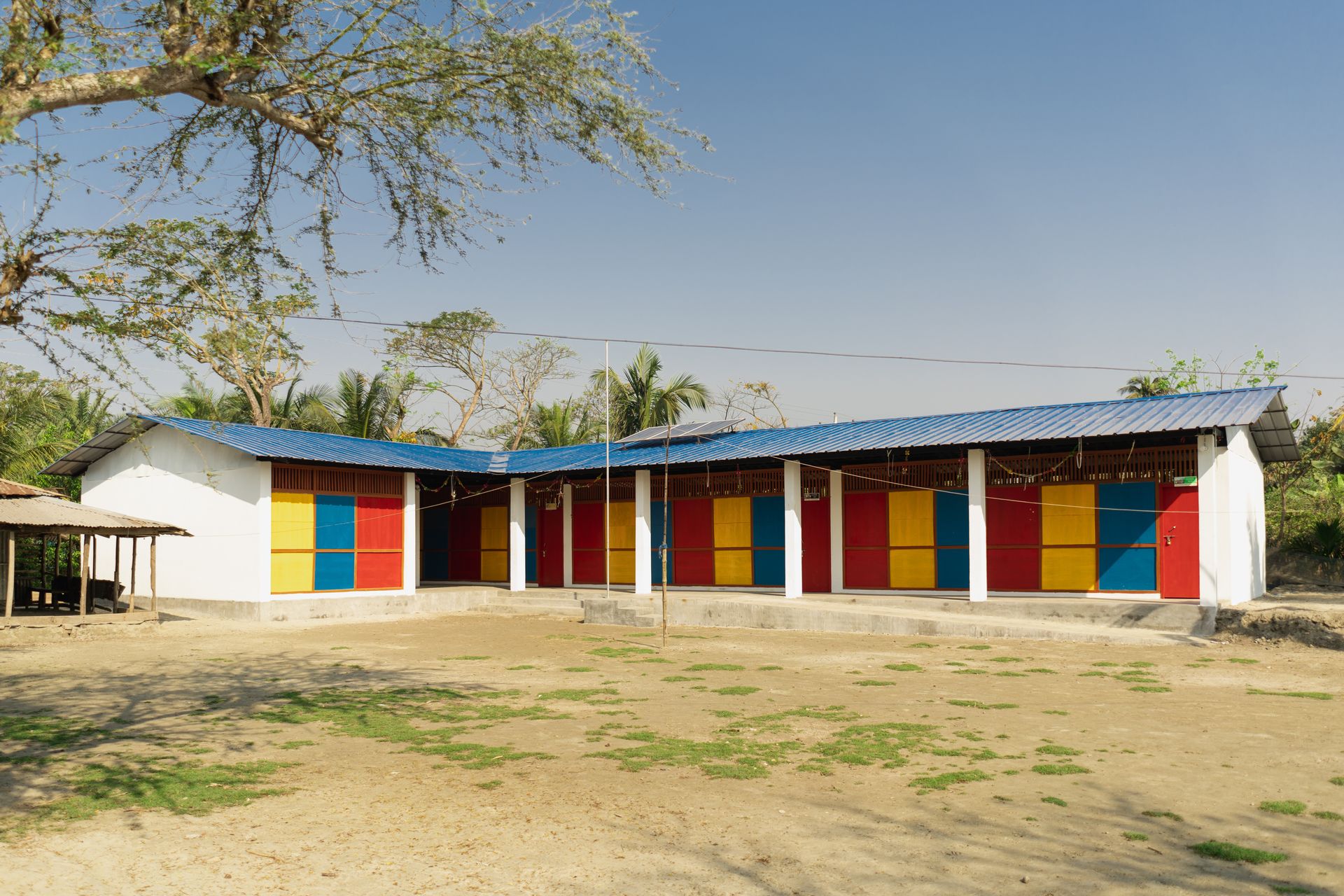Bridge Schools.
The context of education status in coastal Bangladesh is much more different than the other regions of Bangladesh. Access to formal education is highly constrained for the children of the coastal areas. In some of the remote and detached islands, formal education is as close as being non-existent. Due to frequent natural disasters, regular classes are interrupted. Communication failure, reduction in family income, and damaged school buildings are the key reasons for children not attending school. Poverty is very dominant, resulting in child labor, school drop-out, child marriage, and climate change-induced migration.
The coastal areas are facing a higher rate of school drop-out in secondary education than other areas of Bangladesh. This rate is even higher in remote coastal areas due to challenging socio-economic and environmental conditions. Economic hardship, geographical isolation, inefficient secondary schools, lack of parents' education, poor physical condition, and lack of quality resources are the key barriers to ensuring the quality of education in coastal areas. The school closures during the COVID-19 pandemic even worsened the situation and resulted in an increase in school dropouts and child marriage.
To address this challenge, the Community Development Centre – CODEC, supported by ERIKS Development Partner is implementing the “Showpner Thikana” project in Mongla & Shoronkhola of Bagerhat and Rangabali of Patuakhali. The project aims to establish quality secondary educational services for dropout school children and bring them back to school.
Eight bridge schools have already been constructed as a part of this project in Mongla, Shoronkhola & Rangabali, where 341 dropped-out school children are currently admitted to grade – 6 to continue their education. The project is also working closely with the parents of the children so that their education is continued, and they do not fall victim to child marriage and child labor. Our bridge schools will provide educational services until grade-8 and afterward, the children will be mainstreamed to government secondary schools where they will be able to complete their SSC examination.
The design process of the bridge schools started with community-level participatory design development workshops where school dropout children, parents, and community members engaged actively. The aim of these workshops was to brainstorm and articulate the needs, ideas, and expectations of the key stakeholders to initiate the design process of the bridge schools. All sessions of the workshop were designed and facilitated to maximize the participation of all members attending the workshop. The workshop was organized in two phases. In the first phase, discussion and sharing were made about joyful learning, quality education, the environment of education, health hygiene, access for PWD (Persons with disability), disaster resilience, and more. The participants proactively provided their ideas and feedback regarding these issues. The second phase was focused more on the initial design development of the bridge schools through drawings and model making. During this phase, the children drew sketches and made models to express their ideas and aspirations for their schools.
All lands required to construct the schools were donated by the community members. The location of the schools was also selected by the community members, parents, and children considering the proximity to their villages, access, and safety.
The final design reflects the aspirations of the community, especially children. Two types of modules (L-Shape & Linear Shape) were developed to accommodate the schools to the available sites and incorporate the functional requirements. As the schools are constructed in highly cyclone-prone areas, hence, the structural system was designed with RCC members to provide the required rigidity. The steel structure was used for the roofing. Wooden panels were used for enclosures and windows. The windows were designed in such a way that they can provide an ample amount of natural light and ventilation in the classrooms but during cyclones, the windows can be closed completely with ease. Bright colors, selected by the children, were used in the wooden panels which makes our schools very colorful, playful, and interesting for the children. Cross ventilation is ensured in all spaces with openings on different levels which helps to maintain climatic comfort for the children in the warm summer seasons.
In addition to providing secondary-level education, the children of our schools are also engaged in different extra-curricular activities which makes our school very enjoyable for the children. The overall goal of this project is “Empowering school dropout students and communities of coastal areas through collective actions for a better future.” These schools will act as a bridge to achieve this goal.
